I was inspired to write this article thanks to Philip Silva and his Medium article:
“It’s time to reimagine money” (link at the end)
Right now most people without access to significant capital -chances are you are one- don’t have a lot of choice in where and how they live. If you are lucky enough to have stable and gainful employment and -or have a close relationship with someone who does- then you have better access to housing. There is also a generational gap in both income and housing affordability. This is a very recent phenomenon that younger generations face both higher housing costs and lower wages than their parent's generation did.
There are a number of reasons for this, but the main reason for the exorbitant living costs is credit expansion. Credit expansion has increased the amount of money that banks will lend to those investing in or speculating in housing as an investment vehicle rather than as a place to live and serve a community. The increase in house prices has also increased rents. Course, i’m probably telling you things that you not only know but are painfully aware of and have experienced first hand.
With these expansions of credit and associated housing bubbles, we build up to an inevitable pop. We have witnessed the socialised outcomes of housing bubble bursts in cities like Detroit Michigan in the 2008 sub-prime mortgage crisis.

In Detroit, entire neighbourhoods caught up in a collapse of sub-prime real-estate lending have quite literally gone to the dogs. Houses left without owners or even tenants have been ransacked and broken into. Fittings are stolen and all windows broken and surfaces vandalized. Those living in the homes are frequently vagrants and squatters -in some cases- addicted to drugs and with no stable financial means creating further squalor.
In a properly functioning market, this doesn’t happen. Under the current model, these houses would either be owned or rented. When they are rented the tenants have two tasks: to pay the rent and to look after the property.
Lawns must be mowed, edges trimmed, weeds pulled out, grass removed from garden beds, bushes and vines trimmed. The entire time, the tenant pays to live in this property and to maintain it, to secure it, prevent unauthorized trespass, burglars, vandals and squatters.
There is an agreement that other things will be covered by the property owner, for example, if a storm damages the roof and rains come into the building, the owner will arrange the required repairs to keep the building habitable.
This fails because owners frequently become “slum lords” and only do the bare minimum amount of maintenance and don’t take issues seriously. Many houses that have experienced water damage now have problems with mould. This causes severe physical and mental health issues for tenants, worsening issues they are struggling with such as fiscal, emotional and even issues of personal identity and well-being. As issues worsen, it causes their homes and neighbourhoods to deteriorate into slums.
People in their excitement to make money speculating in housing, have forgotten that houses require a lot of hard work and expenditure to maintain. The tenant already stretched beyond their means both in terms of demands for their labour and their limited income, does not have resources to maintain the property. Although there are tenants that are irresponsible and do not look after properties, the vast majority work until their personal breaking point.
The property owners and managers rarely have any empathy for tenants; they operate as a business. The industry awards property managers that get the best returns for owners and squeeze every last dollar out of a housing asset and not those that provide livable and compassionate community housing to tenants. They compartmentalize and categorize tenants as a raw resource to be exploited both for money and for labour. Tenants are an easy scapegoat when property managers want to assign blame. Property managers talk to tenants in a condescending tone completely devoid of any genuine compassion or empathy.
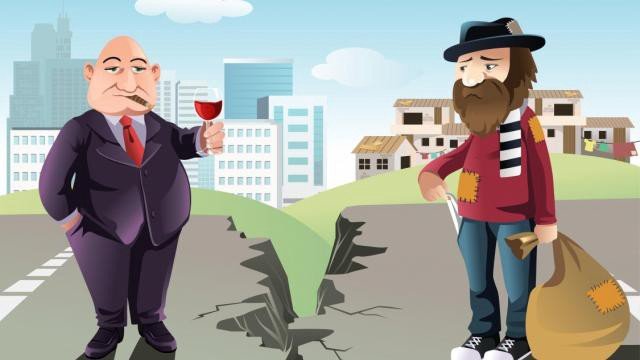.jpeg)
The outcomes of this are not just expensive for the tenants but for society at large. Workplaces suffer from the productivity and economic losses caused by workers who aren’t able to thrive and often suffer physical and mental health issues due to to living in substandard living conditions. Society loses by increased demand on public services such as bulk-billing GPs, hospitals, policing, firefighters and social security. Governments spend billions on social housing programs, rent assistance and fights against blight and urban decay. This is the socialised cost while the profits are reaped by the corporate and financial elite.
Movies like “99 homes” and “The big short” give insight into the economic system and how we got into this mess. Worst of all, the problems that caused this issue in the first place such as a parasitical financial system that uses instruments like credit default swaps, collateralized debt obligations and securitization to privatize profits and outsource or socialise risks continue to exist with very little change. There is a company called Virtual Velocity that researches this phenomenon in order to assist clients with complex mortgage battles.
Unfortunately, public housing has many of its own problems. If the public housing tenant finds employment and their income increases, they are forced to go back to the commercial rental market. Given that rents are so high and wages are so low, they won’t be any better off. Additionally, they may not last long in this job meaning they are now no longer able to pay the commercial market rental rate and then they are facing eviction and rental debt while going back to the waiting list to return to public housing. They potentially are facing homelessness now all because they pursued employment.
On top of this, the issue lack of responsibility (on both sides) is compounded. The tenants own house resembles more of a tragedy of the commons disaster than it does a home.
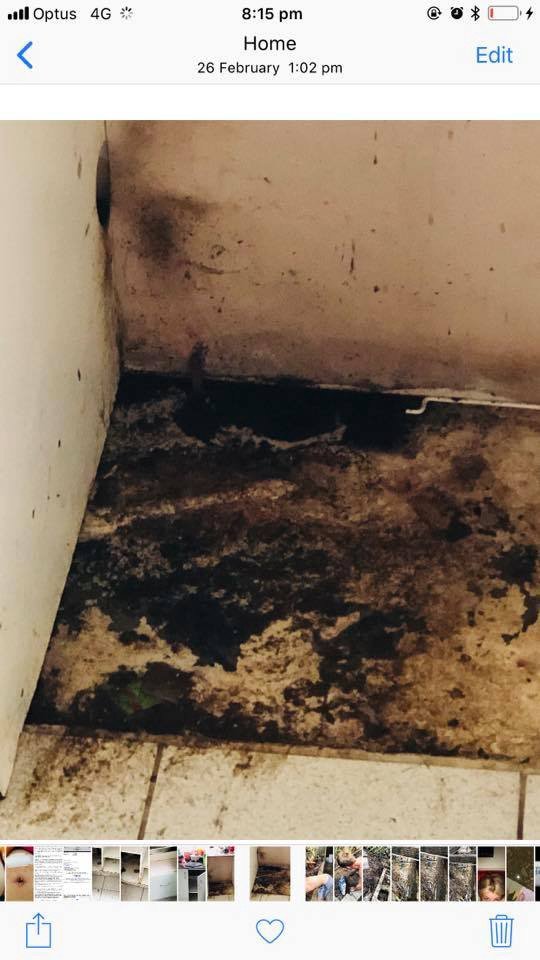
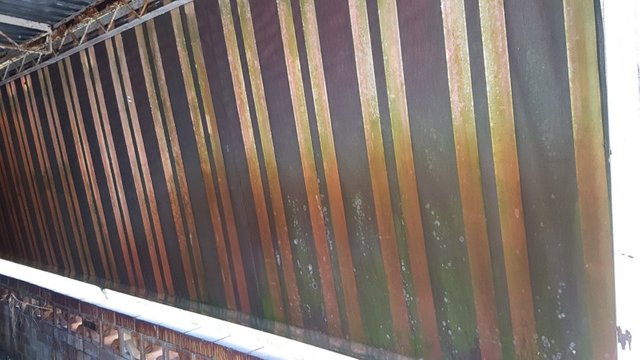
While I could go on talking about the problems forever it’s time to start talking about solutions. Fortunately for us, we have been extremely privileged to have beautiful souls like Elinor Ostrom diligently devote their life to working on “tragedy of the commons” and developing solutions.
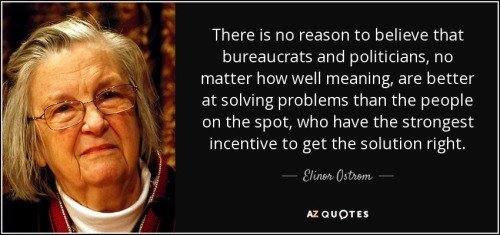
Starting with her thesis research on how a group of stakeholders in southern California cobbled together a system for managing their water table, and culminating in her worldwide study of common-pool resource (CPR) groups, the message of her work was that groups are capable of avoiding the tragedy of the commons without requiring top-down regulation, at least if certain conditions are met (Ostrom 1990, 2010). She summarized the conditions in the form of eight core design principles: 1) Clearly defined boundaries; 2) Proportional equivalence between benefits and costs; 3) Collective choice arrangements; 4) Monitoring; 5) Graduated sanctions; 6) Fast and fair conflict resolution; 7) Local autonomy; 8) Appropriate relations with other tiers of rule-making authority (polycentric governance). This work was so groundbreaking that Ostrom was awarded the Nobel Prize in economics in 2009.
To learn more about her work read:
The Tragedy of the Commons: How Elinor Ostrom Solved One of Life’s Greatest Dilemmas
http://evonomics.com/tragedy-of-the-commons-elinor-ostrom/
Today there is a means of implementing common-pool resource (CPR) groups using block-chain technology. This implementation of block-chain is known as the DAO or Decentralized Autonomous Organization.
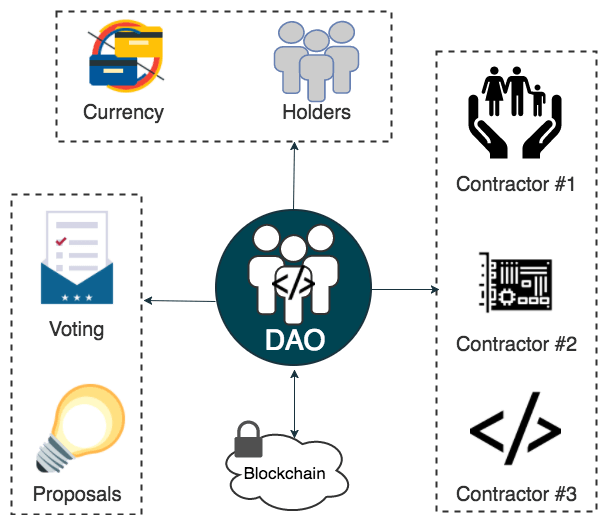
DAO’s operate with Autonomy, Currency (both coins and localized tokens), Proposals, Transparency, Vote and consensus.
To learn more about DAOs read the article: Decentralized Autonomous Organization — Organizations on the Blockchain by Jonas Verhoelen.
To learn more about blockchain governance and Common-Pool Resource see:
One of the great things we can do with a blockchain based systems and a DAO is actually change the role of tenants into a more responsible caretaker position which they would be remunerated for. Essentially, they no longer have a property manager. Gone are rent inspections and restrictions, as well as rent, bond, pet bonds, letting fees and so on-but also gone is someone they can call on to fix structural issues at no cost. Being a caretaker, they are now responsible for this themselves. You may think this is a big demand on the caretaker, but remember they no longer need to work simply to meet rent which itself (without even being paid negative rent) has a lot of value in terms of delivering genuine liberation and empowerment.
![1_w43KAcDi1FglfFDhqZQX0Q.jpeg]
(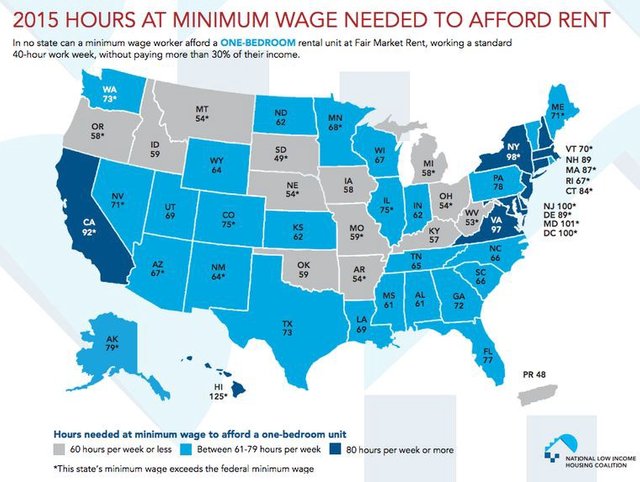 )
)
So instead of doing mind-numbing work like shelf stacking in Walmart or operating a McDonalds check-out (also jobs that are rapidly being automated), they have much more time to ensure the upkeep of their own house and the community in which they live. Freed from the shackles of low-paid, emotionally exhausting and thankless work they can now participate in polycentric governance and or find their Ikigai.
So this brings in the important question of how we will ensure that people look after properties. The answer takes a leaf out of our move to the sharing economy such as Uber and Airbnbe will be a reputation system.
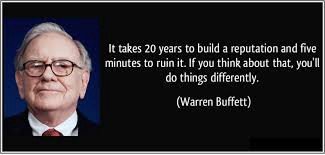
While being without a property manager, the caretakers will still have a wealth of resources, online information and community support groups at their fingertips. How people participate in these communities affects their reputation and how people look after their property affects their reputation, too. To get access to housing in better locations-or those that require more responsible care such as access to gardens, forests and river-systems-will require a higher reputation rating.
There could also be an economic model that encourages people to move to certain areas if the negative rent is more attractive. This, of course, is only one factor but it could be a deal-maker for some.
Some properties that require a lot more work and upkeep will pay a higher rate of negative rent. The income from negative rent can either be used as remuneration for the caretakers own efforts or it can be used to purchase services that maintain the property through online market places such as Air tasker. If at any time the caretaker gets stuck or unwell, they can appeal to the community for help. The community has an interest in keeping the property maintained both for future people that may live there and for how it reflects the overall community -similar to how people today are concerned about how houses in their street affect their property value. Many services could even be programmed. For example, there could be a smart contract for guttering whereby a contractor will clean the gutters in each home at a scheduled interval and be paid in the UBI/negative rent crypto-currency for fulfillment of this task. Many cryptos today such as Etherium and EOS have smart-contract capabilities built-in.
There could be services created that don’t currently exist such as Urban Biosecurity to stop the spread of mould and poverty. For example see: http://www.bioeme.com/osticket/
The negative rent system would be integrated with and complimentary to a universal basic income or UBI.
If you want to know more about the UBI, I recommend Philip Silvas excellent medium article:
https://medium.com/@philipsilva/it-is-time-to-reimagine-money-a87ee52a6e15
There’s no time like the present to start implementing UBI and negative rent but it will especially come in handy after the next crisis of capitalism such as credit shocks, Von Mises’ crackup booms and especially sub-prime mortgage and housing bubbles. Let’s not wait until then. We need to test out these concepts and build prototype caretaker communities. There is a lot of room for further expansion and work around these topics such as municipal utilities (operated as community-pool resources CPR) like power, water, and internet as well as access to services such as health, childcare and education. As existing suburban centers undergo CPR, the community caretakers will need to be very inventive and resourceful because these housing developments and projects were initially designed to make a quick buck with little concern for long term community and sustainability.
Remember the four Rs. Respect, Responsibility, Reputation and Reciprocity. Maybe you can even suggest a fifth R! Oh and don’t blame the poor! Responses below.